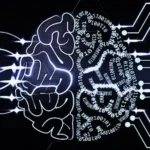In today’s rapidly advancing world of healthcare, medical imaging has emerged as a cornerstone of modern diagnosis and treatment. The ability to visualize internal structures and abnormalities within the human body has revolutionized patient care. As we stand at the crossroads of healthcare and technology, integrating Artificial Intelligence (AI) into medical imaging is ushering in a new era of precision and insight. By harnessing the power of AI algorithms and machine learning, medical imaging is poised to achieve unprecedented levels of accuracy, efficiency, and diagnostic capability, ultimately transforming how medical professionals approach diagnostics and treatment planning.
The Confluence of AI and Medical Imaging
Medical imaging, encompassing techniques like X-rays, Computed Tomography (CT) scans, magnetic resonance imaging (MRI), and ultrasounds, generates a wealth of visual data that holds invaluable information about a patient’s health. However, interpreting this data requires a keen eye, specialized expertise, and time, often resulting in delays and potential diagnostic errors. Enter Artificial Intelligence, a technology that promises to augment human expertise by processing and analyzing medical images in once unimaginable ways.
Machine Learning in Medical Imaging
Machine learning is at the heart of AI-powered medical imaging. Fueled by extensive medical image datasets and corresponding diagnoses, these algorithms are designed to learn and recognize patterns, correlations, and anomalies that might escape human observation. Through repeated exposure to diverse cases, machine learning models become adept at identifying subtle markers of diseases, assisting radiologists and clinicians in reaching more accurate and timely diagnoses.
Deep Learning and Neural Networks
Deep learning, a subset of machine learning, introduces the concept of neural networks—complex structures inspired by the human brain’s neural connections. Deep learning models excel at feature extraction and classification, allowing them to uncover intricate details within medical images. These models excel in tasks such as segmenting regions of interest, detecting lesions, and categorizing tissue types, offering results that are not only accurate but also reproducible.
Computer Vision for Medical Insight
Computer vision, another vital aspect of AI, equips algorithms to decipher intricate information from medical images. These algorithms can identify, measure, and analyze structures within images, providing valuable insights for treatment planning, surgical guidance, and disease progression monitoring. From tracking tumor growth to assessing bone fractures, computer vision is revolutionizing how medical practitioners extract information from visual data.
Advantages and Applications
The marriage of AI and medical imaging confers numerous advantages, reshaping patient care and medical practice.
Enhanced Diagnostics
AI algorithms can identify subtle disease indicators that might be challenging to detect using traditional methods alone. This is especially crucial for conditions such as cancer, where early detection significantly improves treatment outcomes.
Efficiency and Speed
AI-enhanced image analysis expedites the diagnostic process, leading to quicker and more efficient patient care. Radiologists can allocate their expertise to cases demanding in-depth interpretation, while AI algorithms promptly analyze routine cases.
Personalized Treatment
By scrutinizing patient data and medical images, AI can suggest tailored treatment plans aligned with each patient’s unique condition and medical history. This personalized approach contributes to more effective interventions and better patient outcomes.
Research and Innovation
AI’s insights from medical images foster groundbreaking research and innovations. Researchers can leverage AI’s analytical prowess to uncover novel insights, advancing our understanding of diseases and treatment strategies.
Challenges and Future Directions
While the potential of AI-powered medical imaging is vast, certain challenges and considerations demand attention.
Data Quality and Privacy
AI models thrive on high-quality, diverse datasets for effective training. Ensuring these datasets are representative, unbiased, and inclusive is vital to achieving accurate and equitable results. Moreover, safeguarding patient privacy while harnessing medical data is a paramount ethical concern.
Interpretable Models
Ensuring that AI-generated predictions are interpretable and explainable is essential to foster trust among medical professionals. A transparent understanding of the rationale behind an AI-generated diagnosis is crucial for effective clinical decision-making.
Regulatory Approval
Incorporating AI into medical practice necessitates regulatory approvals and standardization. Developing guidelines and protocols for the safe and effective use of AI-powered medical imaging remains an ongoing endeavor.
Conclusion
AI-powered medical imaging is a transformative force in healthcare diagnostics and patient care.
Medical professionals are gaining access to unprecedented insights and diagnostic accuracy through the harmonious integration of machine learning, deep learning, and computer vision. This fusion of AI and medical imaging has the potential to reshape healthcare delivery, enabling earlier disease detection, personalized treatment strategies, and a more comprehensive understanding of medical conditions.
As AI technologies continue to evolve and mature, the future of medical imaging promises a harmonious convergence of precision and insight, shaping a new era of excellence in healthcare.










